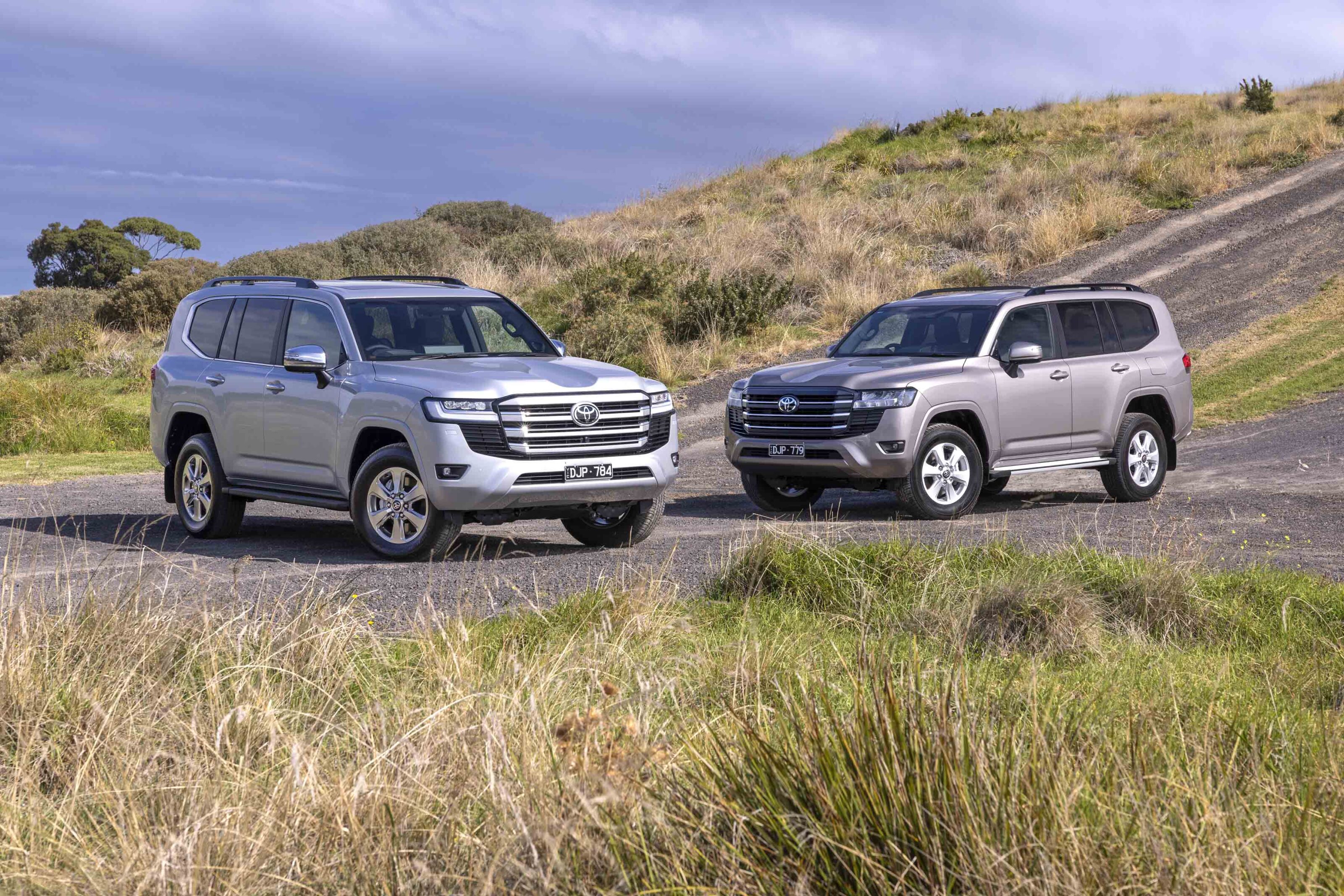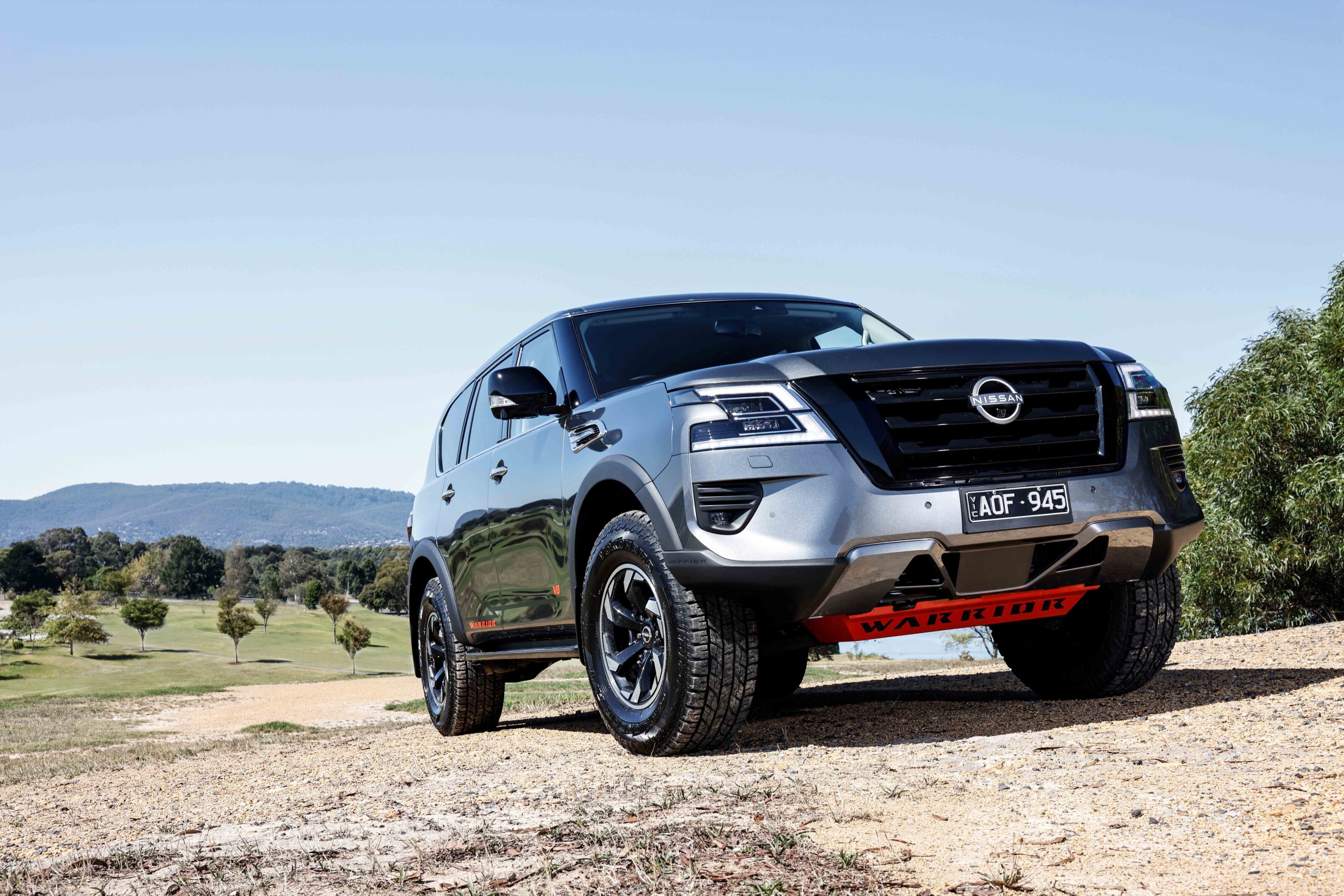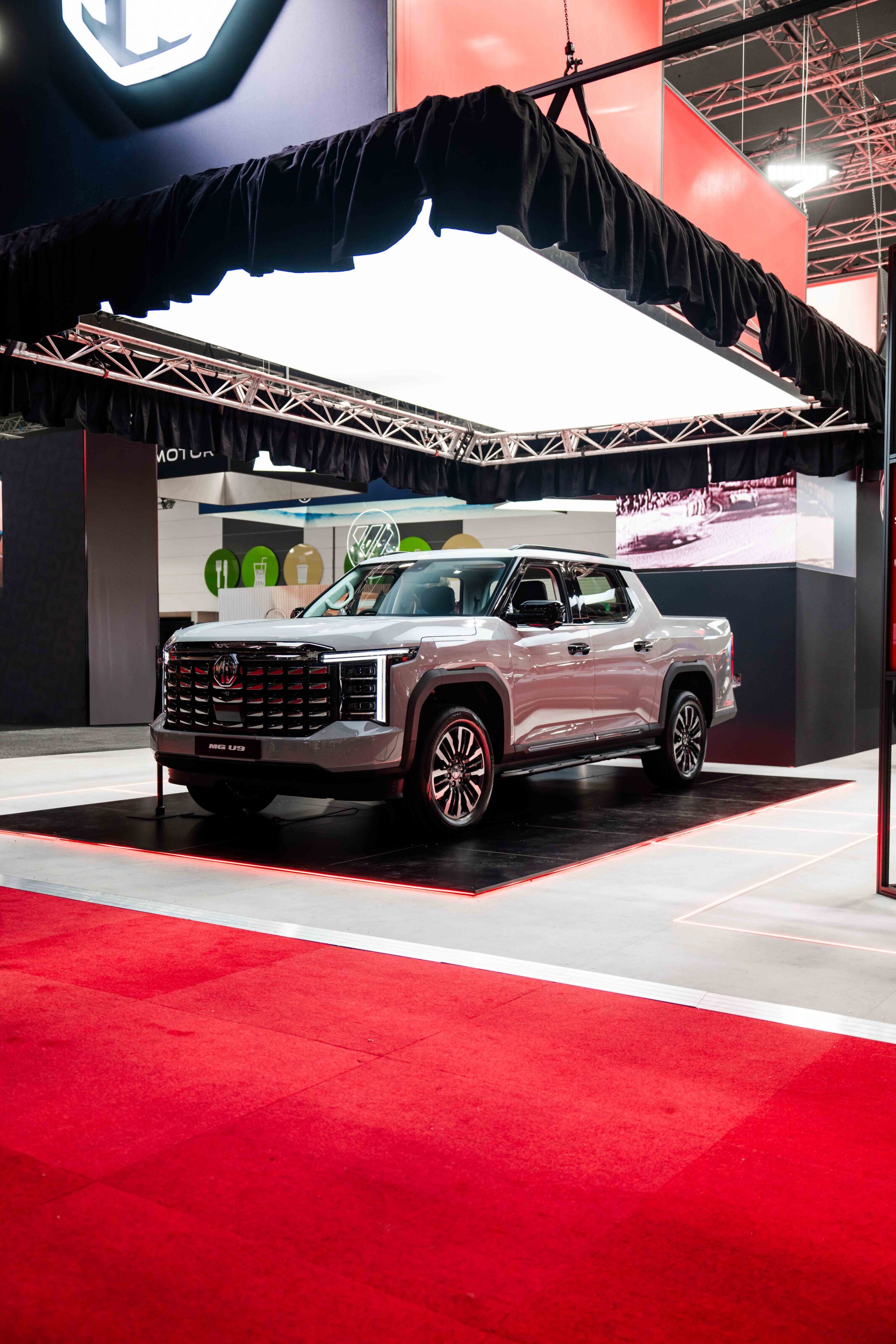MITSUBISHI celebrates 40 years of its popular Triton ute, with its 2019 model featuring revised exterior styling, a tweaked 4×4 system, and equal best-in-segment safety and driver assist tech.
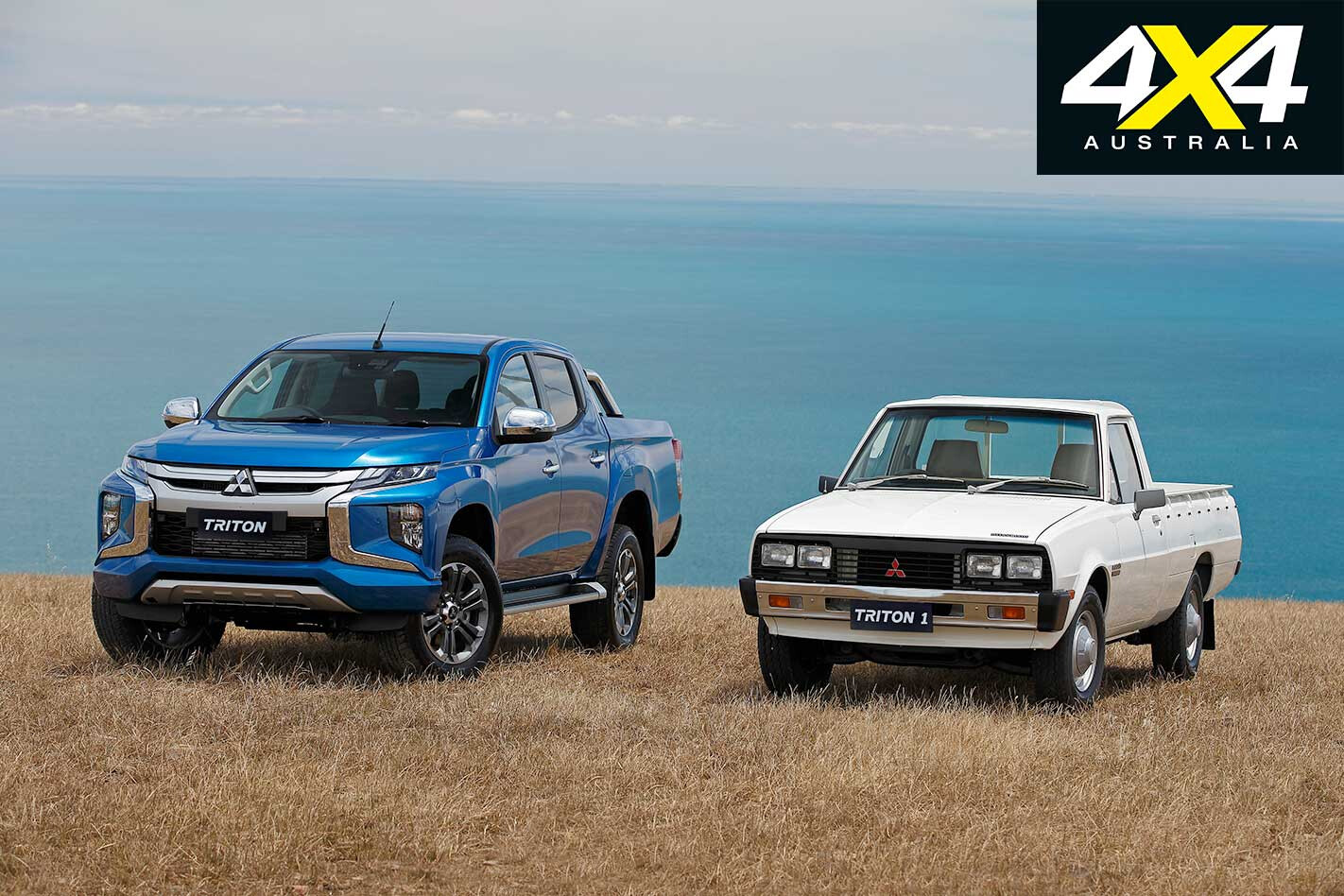
Alongside these updates the Triton carries over the 133kW/430Nm 2.4-litre turbo-diesel engine of the current model (with some weight savings, courtesy of a die-cast aluminium cylinder block) and the six-speed manual, but ups the ratio count by one for auto buyers, with a new six-speed self-shifter now available, complete with a taller final (sixth) gear ratio.
You can also still get a petrol Triton, in single-cab 2WD form, powered by Mitsi’s 94kW/194Nm 2.4-litre four. The MY19 Triton is spread over 19 models, with 16 of those 4×4 versions, and with three body variants: single-cab/chassis, club cab, and dual-cab.
Underneath, the same well-proved underpinnings can be found. Independent coil spring front suspension is matched with a live-axle leaf-sprung rear that now sports dampers of a larger diameter (coil spring settings have been revised for MY19 as well).
Triton’s unique offering of constant 4WD on sealed surfaces – via its Super Select II system – continues, albeit only in top-spec GLS and GLS Premium (other models make do with a part-time 4×4 system). Super Select 4WD II now features off-road drive ‘modes’ (gravel, sand, mud/snow and rock). The GLS Premium is the only Triton variant to offer a rear diff-lock as standard.
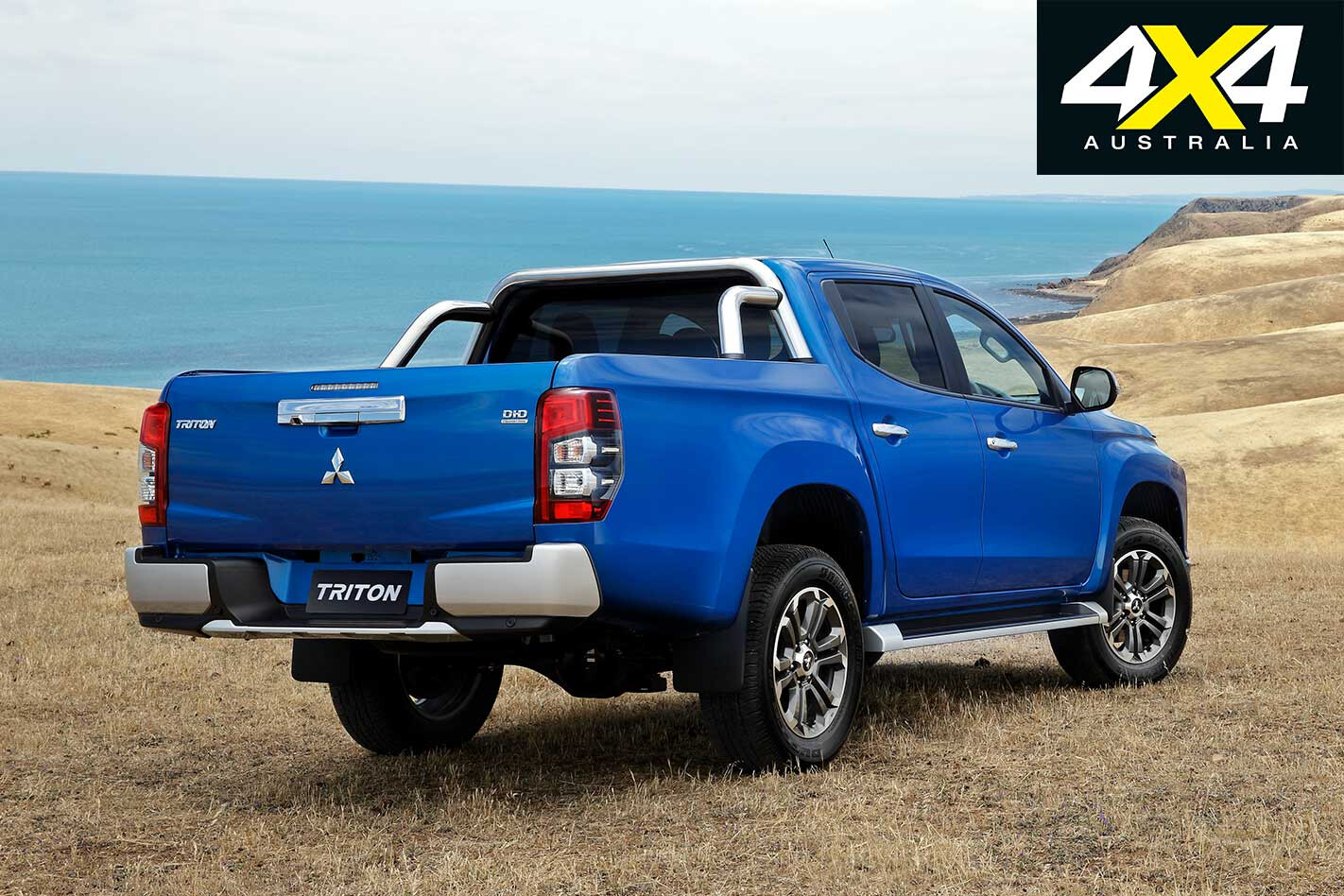
With a mix of smart upgrades and sticking to the tried and true – plus very competitive pricing (MY19 models have risen only slightly in price) that starts at $32,990 and tops out at $51,990 (see Pricing sidebar for full list) – it is easy to understand Mitsubishi’s confidence in its new “tougher truck”, especially when it comes to maintaining its current sales success (the Triton currently sits third in 4×4 ute sales).
Much more than a new face
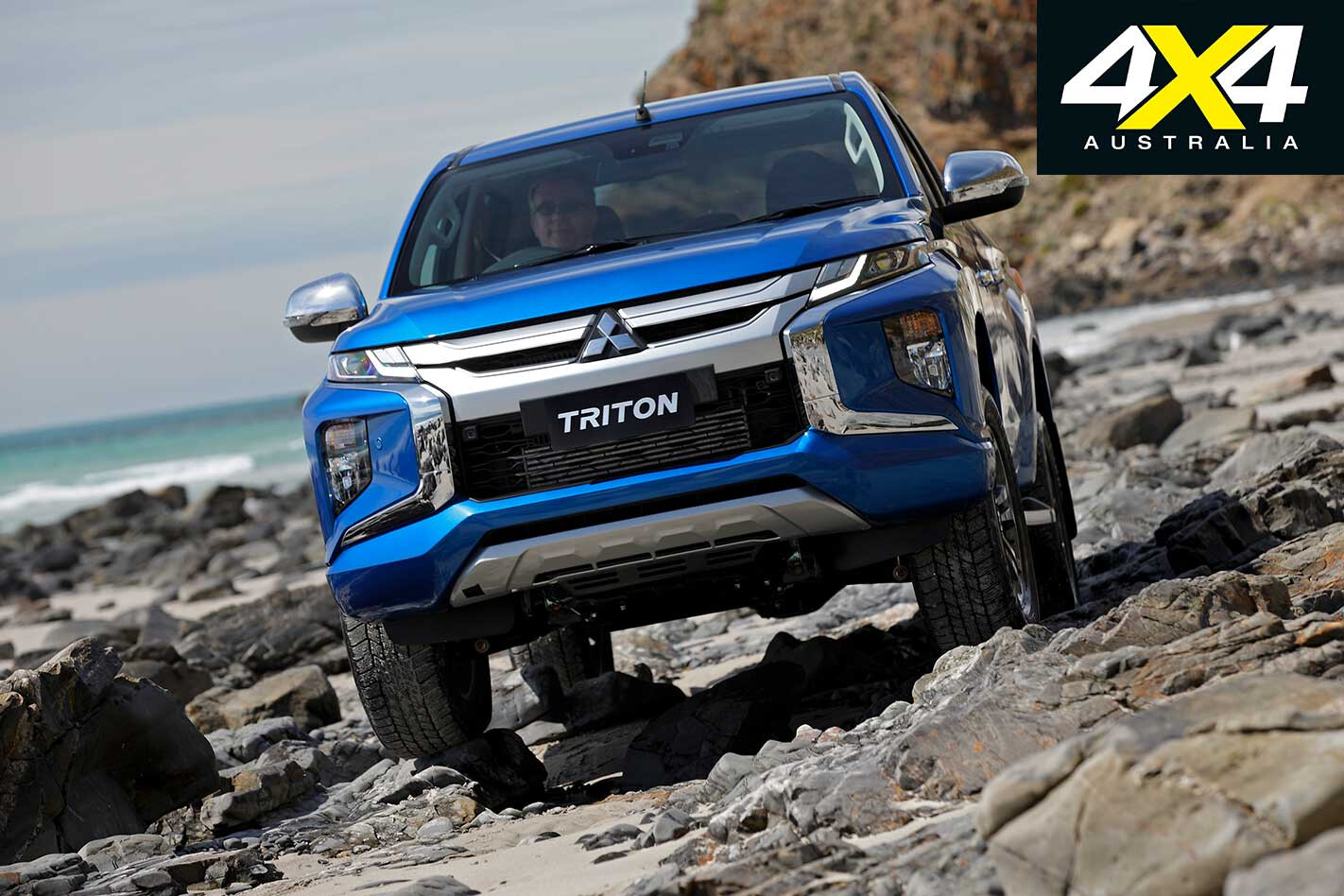
THE front-end styling of the MY19 Triton, dubbed ‘Dynamic Shield’ by Mitsubishi, is in line with the market segment trend of a more aggressive, tougher-looking ute, as well as offering a nod to its Pajero Sport stablemate.
The styling may be polarising for buyers but it’s not just an artist’s whim gone wild; the high-set headlights are now more protected from frontal impact and when tackling a water crossing, and is one example of function with fashion. The Triton’s side profile is equally beefed up, with the tray’s bottom edge now running lower (rather than upswept, as in the previous model) and the sides of the tray taking on a deeper, more slab-sided appearance, with the squared-off rear-end finishing the muscling up of the Triton body.
Continuing the ‘shield’ theme in a more direct way is the impressive array of advanced active safety tech upgrades (and their related acronyms). Joining a select few in its market segment (Ford Ranger and Mercedes-Benz X-Class), a number of Triton models include Forward Collision Mitigation (FCM) with pedestrian detection as standard.
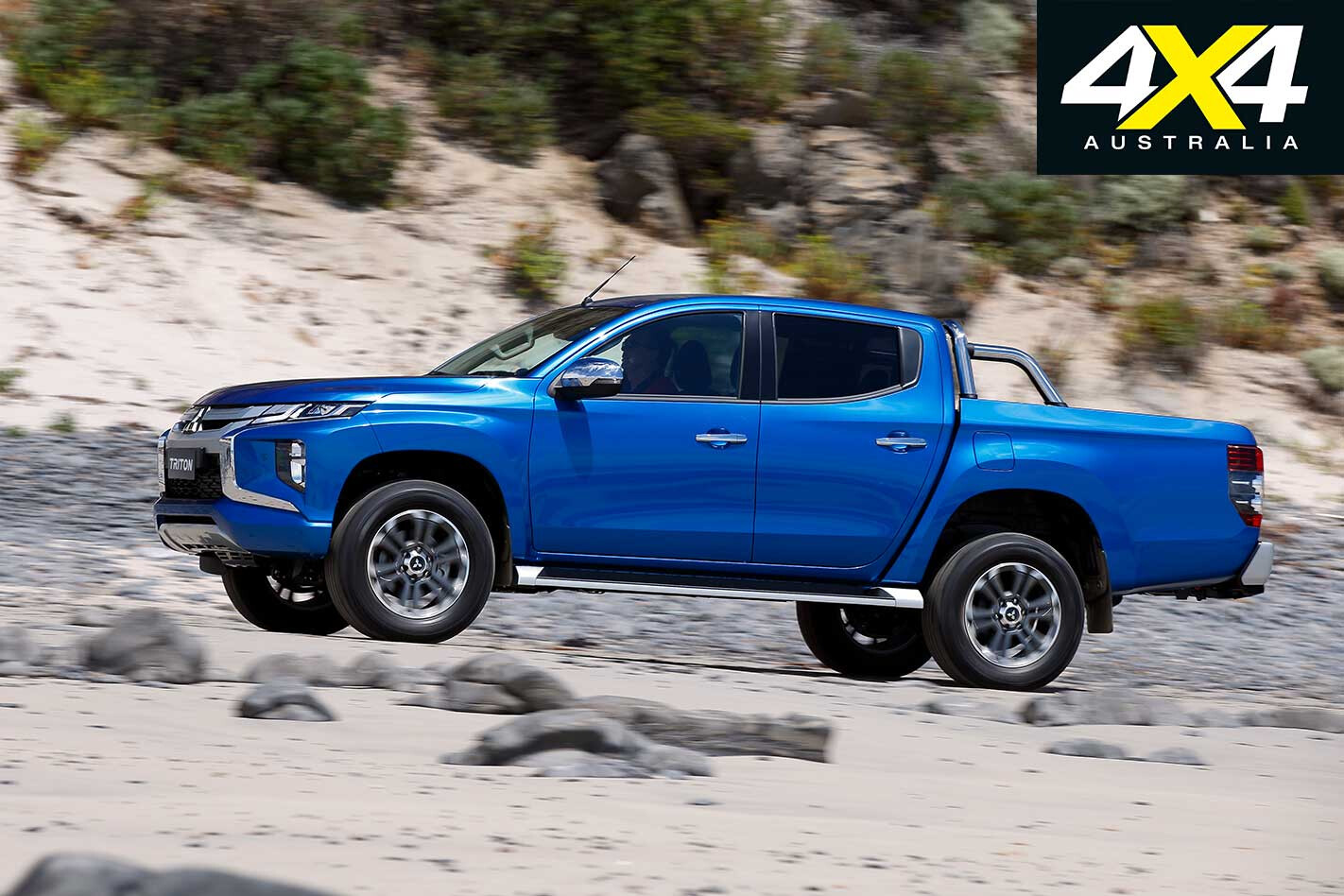
FCM includes three ‘stages’ of control: an audible alert gives the driver an ‘early warning’ of a potential upcoming collision; when the likelihood of impact is higher there’s an audible alert and ‘firm automatic braking’; and when there’s a ‘very high risk of collision’ the FCM emits the audible alert and applies ‘emergency automatic braking’.
Oddly, in light of FCM being across a wide range of spec levels, Lane Departure Warning (LDW), Blind Spot Warning (BSW), Lane Change Assist (LCA), Rear Cross Traffic Alert (RCTA), Ultrasonic misacceleration Mitigation System (UMS; designed to modulate throttle response when in slow driving situations, such as parking), Automatic High Beam (AHB) and Hill Descent Control (HDC) are all only available on GLS and GLS Premium.
That doesn’t mean lower spec models miss out – brace yourself for more acronyms – with Hill Start Assist (HAS), Emergency Stop Signal function (ESS), Emergency Brake Assist (EBA), Active Stability Control (ASC), Trailer Stability Assist (TSA), Active Traction Control (ATC), ABS, EBD and Brake Override System (BOS) all standard across the range.
Add in myriad airbags (driver/passenger front and side, curtain airbags and driver knee), Multi Around Monitor (MAM; offering a birds-eye view of the vehicle when parking, for the GLS Premium only), a rear camera and front/rear parking sensors, and the new Triton has driver and safety tech pretty well covered.
Dynamically driven
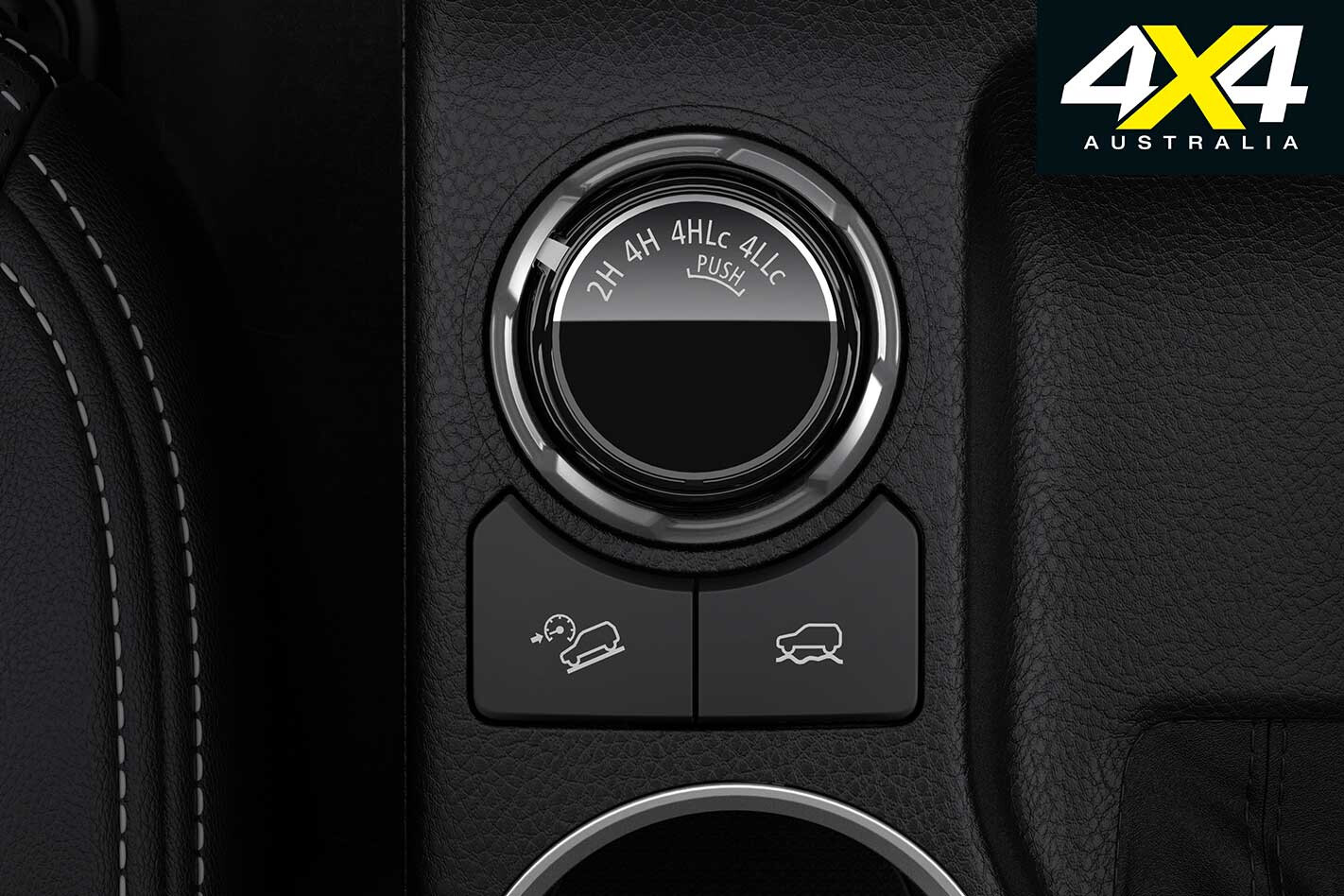
MITSUBISHI is claiming improved off-road capability thanks to improved approach, ramp-over and departure angles (31, 25 and 23 degrees respectively). The chassis and engine bay, as well as the cab and cargo bed joins, have all been subject to reinforcement in key areas to improve overall rigidity.
The aforementioned suspension tweaks are claimed to improve on- and off-road comfort, courtesy of the increased oil capacity of those new, larger, rear dampers, while the 18-inch-wheel optioned models cop larger ventilated discs. (GLS and GLS Premium have 18-inch alloys as standard, the rest of the Triton range rolls on a mix of 16-inch steelies and alloys).
Off-road, the revised Super Select 4WD-II’s new mode selector options include Gravel, Mud/Snow, Sand and Rock. – Gravel matches throttle control to stability over loose-dirt roads – Mud/Snow controls wheel slip and directional stability and also adjusts ‘slip’ and dulls-down the amount of traction control when needed to maintain momentum – Sand minimises wheel slip and acts as a pseudo LSD and, like Mud/Snow, tweaks further slip and TC input when needed – Rock also resembles an LSD to minimise wheel slip when any wheel loses traction/contact with the ground. This mode also keeps the transmission in the most-suited gear to optimise torque delivery.
The previous-gen Triton, when the diff-lock was engaged, would turn off ETC totally – there’s no word from Mitsubishi on whether this is the same for MY19, or that the Triton now retains ETC when the rear diff is locked. The GLS and GLS Premium models also include HDC, which operates at a speed of up to 20km/h.
Inside and out
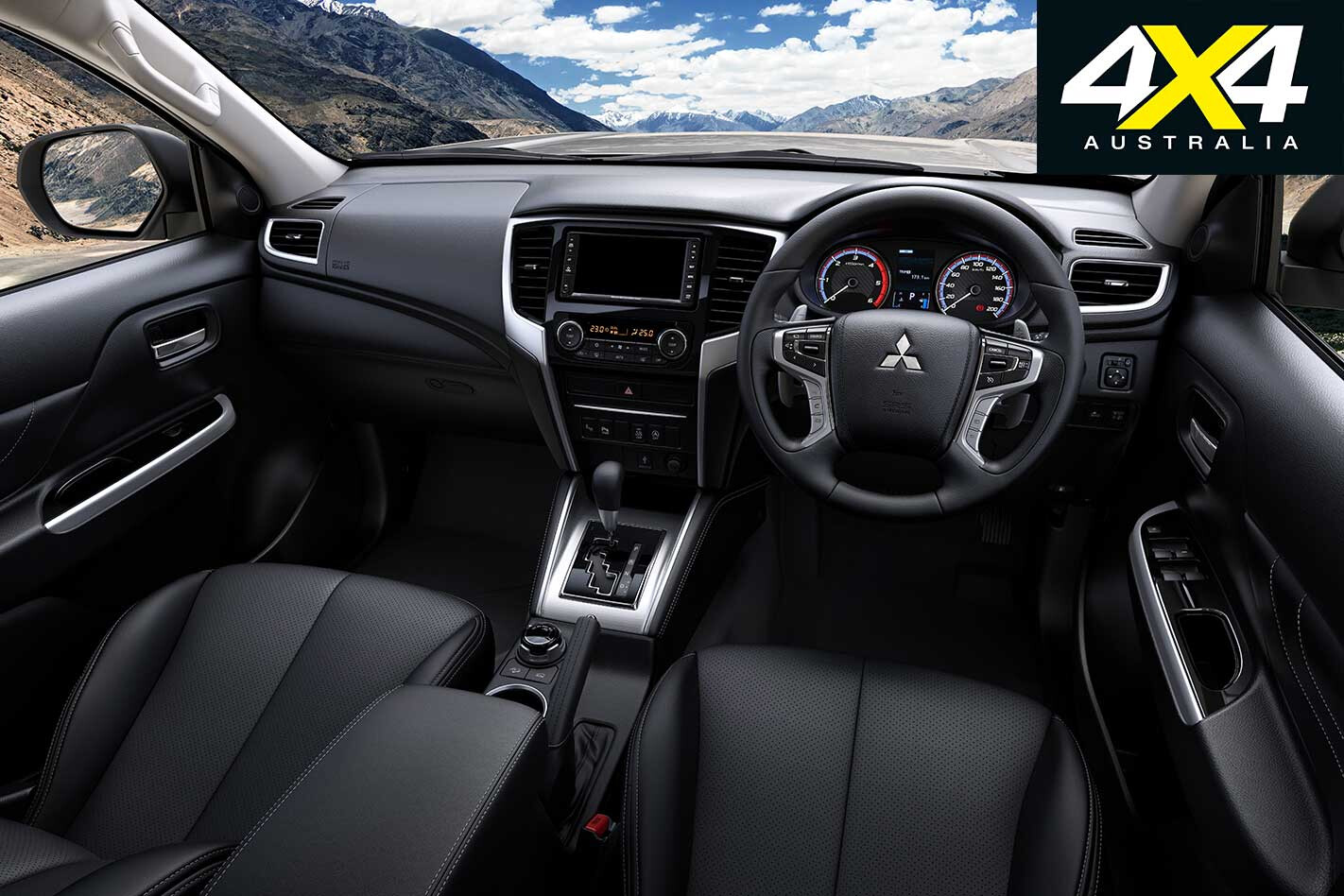
THE Triton cabin is relatively unchanged from the previous model, with a number of styling tweaks and a welcome addition in the form of roof-mounted air vents for rear passengers. Infotainment is taken care of through touchscreen set-ups ranging from 6.1- to 7-inch in size.
In this age of apps, surprisingly it is only the GLX+, GLS and GLS Premium that get Apple CarPlay and Android Auto. And, only those three models get two USB connections – the rest of the range only have one. Leather seats are confined to GLS Premium, with Premium acquiring power-assisted seat adjustment for the driver seat only; GLS gets a “premium fabric seat trim”, while the rest of the range cops regular fabric.
Triton headlights are halogen in all models bar the two GLS vehicles, and the same applies for Daylight Running Lights (DLR). The two top-spec models also get carpet flooring, while the rest make do with vinyl.
A big year
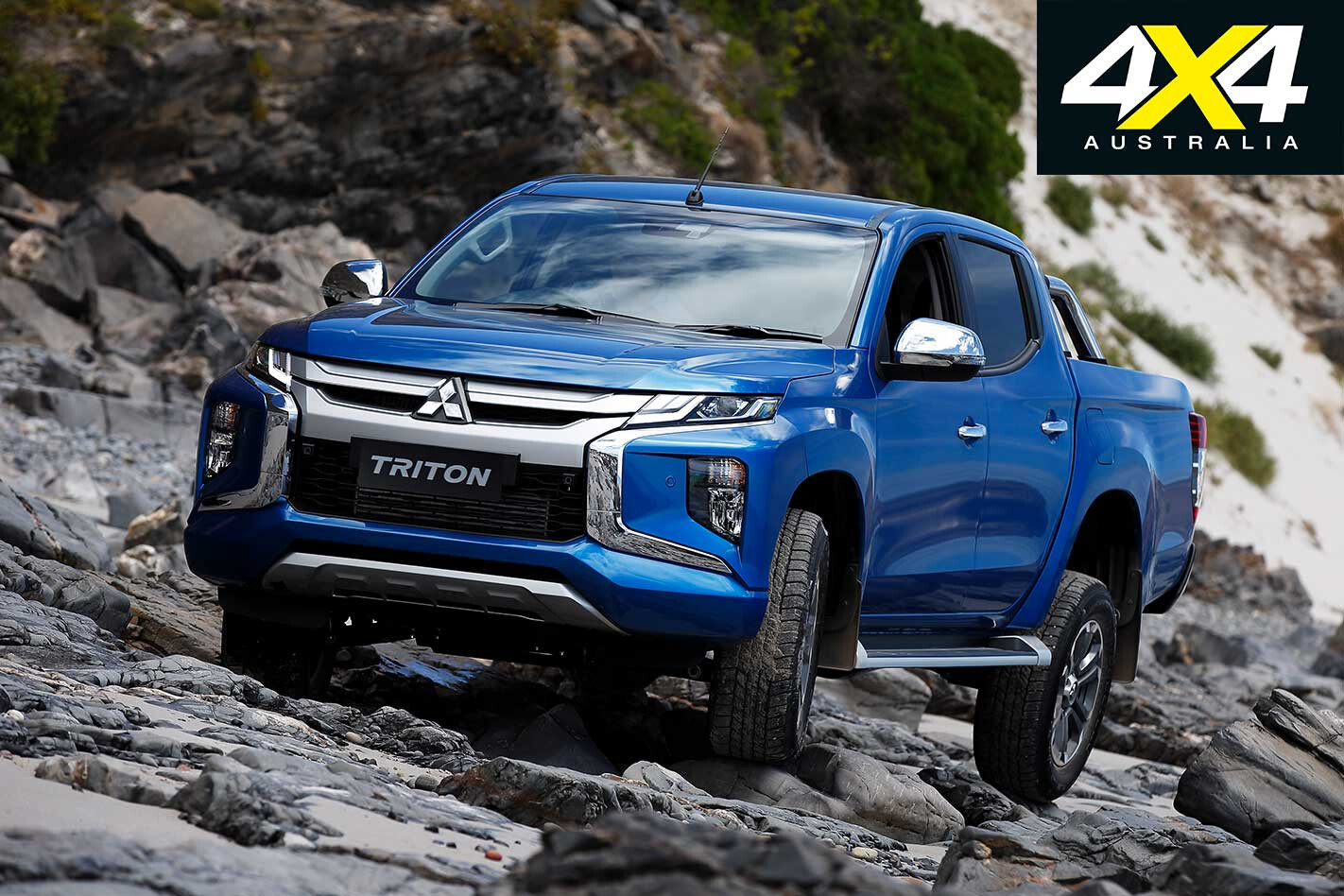
WITH its attractive pricing and a ton of models across that pricing range, the Triton should continue to sell well. Whether it will get any closer to the big two (Hilux and Ranger) remains to be seen, but for those 4×4 ute buyers on a tighter budget, the Triton’s well-proved mechanicals, manoeuvrable size, revised styling and overall bang for your bucks – not to mention the benefits of Super Select 4WD II – mean the Triton should continue to offer a compelling argument for buyers in the ever-more crowded 4×4 ute market.
Mitsubishi Triton 4×4 range pricing:
Triton Single Cab 4×4 GLX Cab Chassis 2.4L Man Diesel: $32,990 GLX Cab Chassis 2.4L Auto Diesel: $35,490
Triton Club Cab 4×4 GLX Cab Chassis 2.4l Man Diesel: $35,490 GLX Cab Chassis 2.4l Man Diesel: $38,790 GLX+ Cab Chassis 2.4l Man Diesel: $40,490
Triton Dual Cab 4×4 GLX Cab Chassis 2.4L Man Diesel: $36,240 GLX ADAS Cab Chassis 2.4L Auto Diesel: $39,540 GLX 2.4L Pick Up Man Diesel: $37,490 GLX 2.4L Pick Up Auto Diesel: $39,990 GLX ADAS 2.4L Pick Up Man Diesel: $38,290 GLX ADAS 2.4L Pick Up Auto Diesel: $40,790 GLX+2.4L Pick Up Man Diesel: $39,990 GLX+2.4L Pick Up Auto Diesel: $42,490 GLS2.4L Pick Up Man Diesel: $44,490 GLS2.4L Pick Up Auto Diesel: $46,990 GLS Premium2.4L Pick Up Auto Diesel: $51,990
MORE: Mitsubishi Triton Range Review MORE: Mitsubishi Triton Specs, Range & Price



